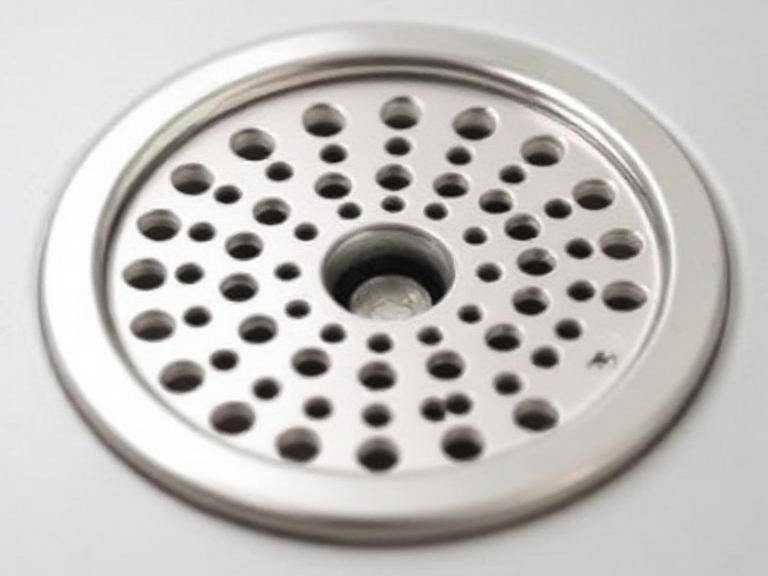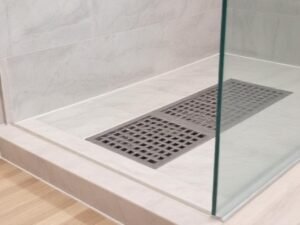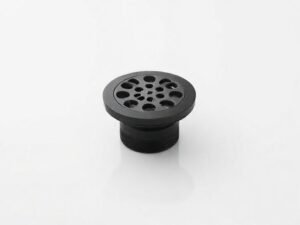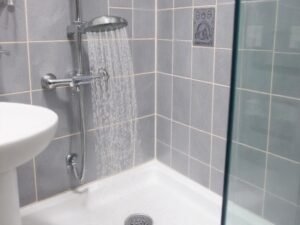If you’re renovating a bathroom, replacing a drain cover, upgrading to a modern system, or fixing a clog, you may ask yourself:
“How do I know what type of shower drain I have?”
Identifying your shower drain type is essential for choosing the right replacement, ensuring proper installation, preventing water leakage, and maintaining optimal drainage performance.

In this comprehensive guide, we’ll explain how to identify your existing drain, the most common shower drain designs, their compatibility with different floors, and when you should upgrade to a more modern drainage system.
We also include a spotlight on Noahhometech Bathroom Drainage Experts—a global manufacturer of premium stainless-steel shower drains.
Table of Contents
- Why It’s Important to Know What Type of Shower Drain You Have
- Common Types of Shower Drains
- How to Identify What Type of Shower Drain You Have
- How Your Floor Type Influences Your Drain Type
- Standard Shower Drain Sizes
- When You Should Upgrade Your Shower Drain
- Manufacturer Spotlight: Noahhometech Bathroom Drainage Experts
- Summary Table: Types of Shower Drains & How to Identify Them
- Frequently Asked Questions (FAQ)
- References
Why It’s Important to Know What Type of Shower Drain You Have
Knowing what type of shower drain you have ensures that any replacement or renovation is compatible with your plumbing system. Choosing the wrong type may lead to:
- Floor leaks
- Wrong drain height
- Poor drainage performance
- Unpleasant odors
- Difficulty installing tile or waterproofing membranes
Correct identification protects your bathroom structure and avoids unnecessary expenses.
Common Types of Shower Drains
Shower drains generally fall into several categories depending on shape, installation method, and appearance. Below are the most widely used types.
1. Standard (Traditional) Floor Shower Drain
A round or square drain commonly found in older homes and basic construction bathrooms.
2. Odor-Resistant Shower Drain
Designed with a built-in anti-odor mechanism using internal sealing structures such as gravity traps or magnetic flaps.
3. Ultra-Thin Shower Drain
A minimalist, low-profile drainage solution ideal for modern bathrooms with sleek aesthetics.
4. Linear Shower Drain
A long, narrow drain installed along a wall or center of a walk-in shower, allowing for single-direction floor slope.
5. Invisible Shower Drain
The drain cover is hidden beneath a tile insert, creating a seamless and elegant shower appearance.
6. Wall Shower Drain
A drain positioned vertically along the wall, freeing floor space and allowing easier cleaning.
7. Vertical/Strip Drains
Slim, elongated drainage channels ideal for small spaces or minimalist designs.
8. Square or Triangular Bathroom Drains
Common in corner installations and compact bathrooms.
How to Identify What Type of Shower Drain You Have
To determine what type of shower drain you have, follow these simple steps:
1. Look at the Drain Shape
- Round or Square: Usually standard or odor-resistant drains
- Long and narrow: Linear drain
- Triangular: Corner drain
- Hidden under tile: Invisible drain
2. Check the Installation Location
- Center of the shower: Standard or square drain
- Against the wall: Linear wall drain or wall shower drain
- Along a corner: Triangular drain
3. Examine the Drain Thickness
Ultra-thin drains typically have slim, minimalist covers with a small installation height.
4. Look for Anti-Odor Mechanisms
If your drain has a sealing mechanism, magnetic flap, or internal gravity trap, it is an odor-resistant type shower drain.
5. Identify Your Drain Connection Style
- Threaded connection: Common in standard drains
- Push-fit / compression sealing: Used in modern linear drains
- Welded stainless steel connection: High-end commercial drains
6. Consider Your Bathroom’s Age
- Older homes (10–25 years): Traditional center drains
- Newly renovated homes: Linear, wall, or invisible drains
- Luxury hotels: Wall or ultra-thin drains
If you still can’t identify the drain, remove the drain cover—usually held by screws or pressure clips—and inspect the internal assembly.
How Your Floor Type Influences Your Drain Type
Your shower floor structure plays a major role in determining what drain is installed.
Tile Shower Floors
These floors work with nearly every drain type, including:
Acrylic or Prefabricated Shower Trays
These typically require:
- Standard round drains
- Prefabricated compatible square drains
Concrete Floors (Commercial Usage)
- Strip drains
- Heavy-duty linear drains
- Industrial odor-resistant drains
Standard Shower Drain Sizes
Another clue when identifying what type of shower drain you have is its size.
- 2-inch outlet: Most-common for residential showers
- 3-inch outlet: High-flow commercial systems
- 4-inch outlet: Industrial drainage
Linear drains vary widely in length—from 20 cm to over 150 cm depending on design.
When You Should Upgrade Your Shower Drain
You should consider upgrading your shower drainage system if you experience:
- Slow drainage
- Persistent odors
- Visible corrosion
- Shower floor leaks
- Bathroom remodeling or tile upgrade
- Preference for a modern, minimalist design
Modern drains allow higher flow rates, longer lifespan, and improved hygiene.
Manufacturer Spotlight: Noahhometech Bathroom Drainage Experts

Noahhometech Bathroom Drainage Experts is a leading global manufacturer of premium shower drainage products used in homes, hotels, commercial facilities, and luxury projects. Specializing in OEM/ODM production, the company provides advanced drainage solutions crafted from high-quality 304 stainless steel with durable PVD surface finishes.
Why Noahhometech Stands Out
- Full-service OEM & ODM manufacturing
- Ultra-thin, invisible, wall-mounted, and premium linear drain designs
- Brand customization and rapid prototyping
- Certified materials with superior corrosion resistance
- Modern aesthetic designs suitable for premium bathrooms
Featured Products
- Standard Type Shower Drain: Reliable and easy to clean for everyday use.
- Odor-Resistant Type Shower Drain: Built-in sealing system to prevent backflow and odors.
- Ultra-Thin Type Shower Drain: Minimalist design perfect for modern bathrooms.
- Invisible Shower Drain: Blends seamlessly with floor tiles for a clean, sleek look.
- Linear Wall and Strip Drains: Ideal for large showers and spa-like spaces.
- Triangular and Square Bathroom Drains: Stylish solutions for corner installations.
Noahhometech provides reliable, visually striking, and functional drainage solutions tailored for high-end interiors.
Summary Table: Types of Shower Drains & Identification Guide
| Drain Type | How to Identify | Best For |
|---|---|---|
| Standard Shower Drain | Round/square, center of shower, basic structure | Traditional bathrooms |
| Odor-Resistant Drain | Internal sealing mechanism or flap | Bathrooms with odor issues |
| Ultra-Thin Drain | Very slim profile | Modern, minimalist spaces |
| Linear Drain | Long, narrow channel | Walk-in showers, luxury designs |
| Invisible/Tiled Drain | Tile insert on top, seamless look | Designer bathrooms |
| Wall Shower Drain | Installed along the wall instead of the floor | Premium hotel bathrooms |
| Square/Triangular Drain | Geometric shape, often corner installation | Compact bathrooms |
Frequently Asked Questions (FAQ)
1. Can I replace my shower drain without removing the floor?
Yes—if the drain uses a screw-in or compression-fit system. Linear or wall drains usually require partial tile removal.
2. How do I know if my shower drain is clogged or damaged?
Slow drainage, gurgling sounds, bad odor, or water pooling indicate drain issues.
3. Are linear drains better than standard drains?
They provide better flow capacity, modern aesthetics, and simpler floor slope design—but cost more.
4. What type of shower drain lasts the longest?
Drains made from 304 stainless steel or 316 marine-grade steel last 10–25 years or more.
5. How do I measure my shower drain?
Remove the cover and measure the drain body diameter, outlet pipe size, and cover dimensions.





